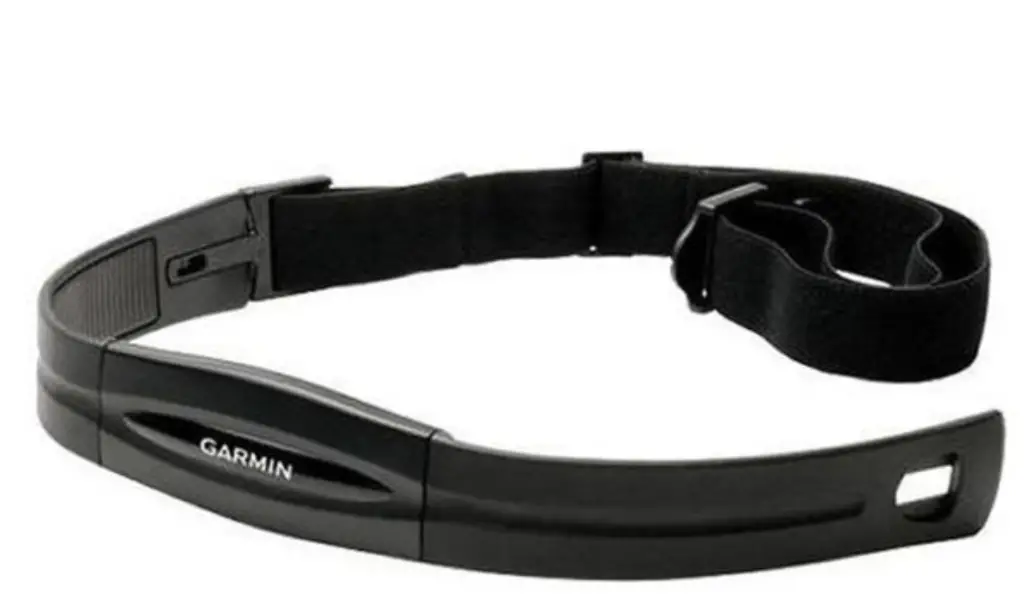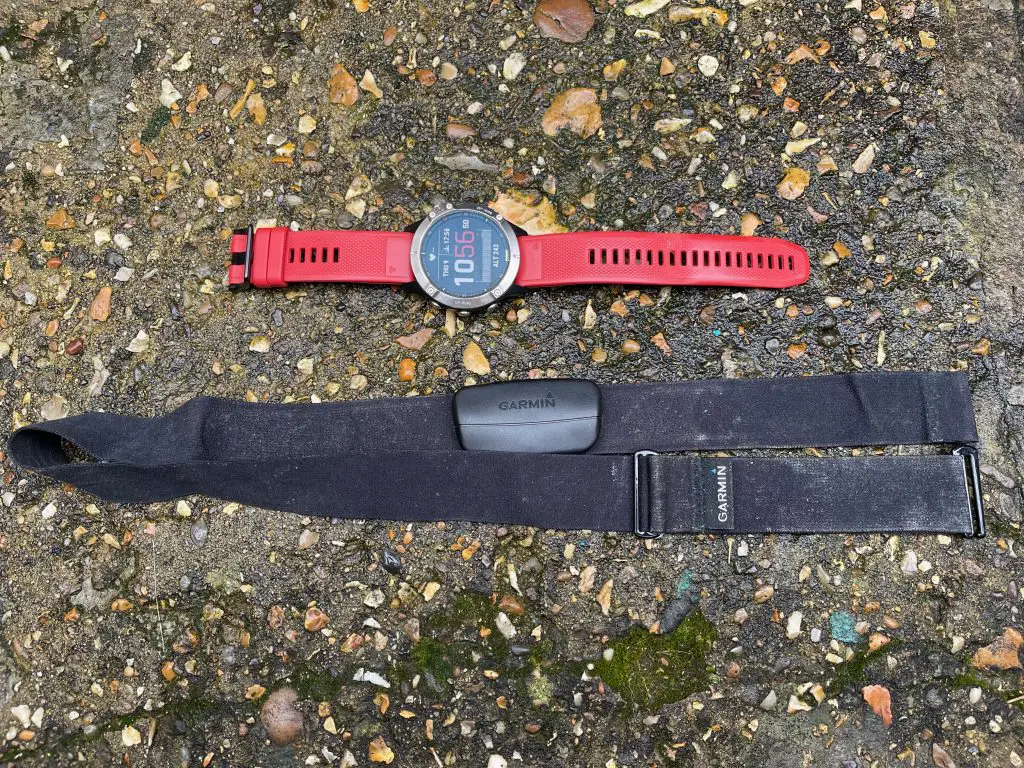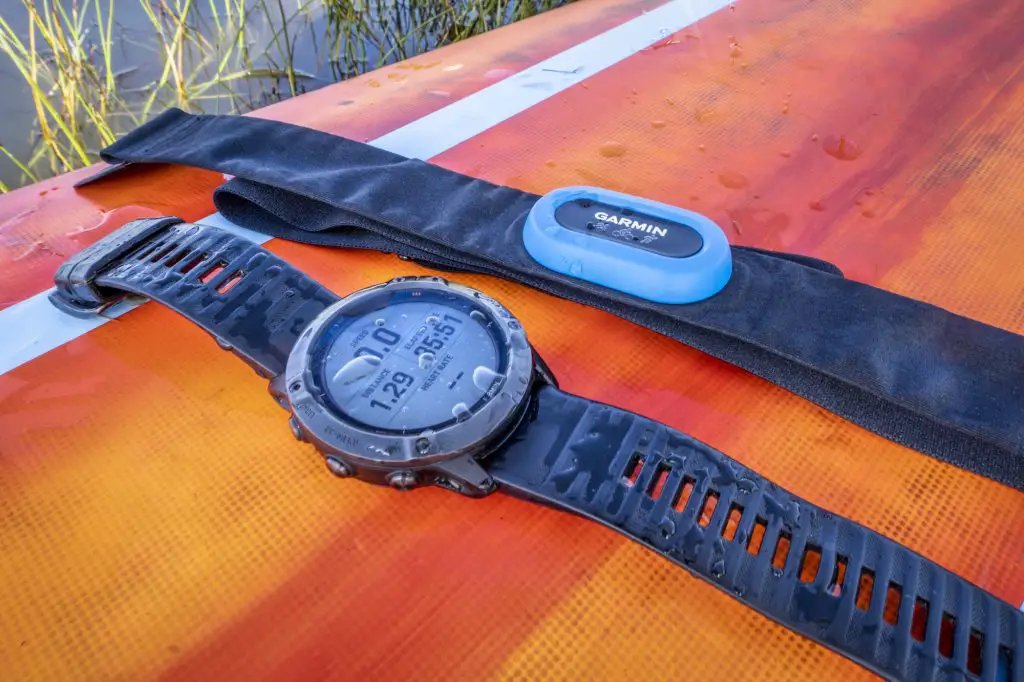The Garmin Calories Accuracy Guide
How accurate is Garmin’s calories burned calculation? A deep dive into the world of calorie calculators
Calorie calculators and registering of daily steps were two of the first features to be added to activity trackers. In the early days (the very first pedometer was launched in 1965!), the readings were debatable at best as they were based on a simple calculation of 10,000 steps per day and the average calorific burn per step.
Since then, the technology underpinning devices has made huge leaps. And the advent of smartwatches such as the Garmin Fenix 6, the Coros Apex, the SUUNTO 9, and even the basic Vivosmart HR+, has further changed the landscape and our understanding of how the human body works.
- How accurate is Garmin's calories burned calculation? A deep dive into the world of calorie calculators
- So, how does Garmin calculate calories?
- But what about older activity trackers and smartwatches?
- Important points to note
- Garmin heart rate straps
- A low-tech approach
- So, how many calories do you burn walking?
- A more precise method of calculating the calories you burn walking
- Wrapping it all up
So, how does Garmin calculate calories?
Garmin uses a series of metrics personal to you in order to calculate the number of calories burned during sports and day-to-day activities such as walking, or even when you’re lounging on the sofa. The following data is captured in order to provide you with a pretty accurate view:
- Weight. You’ll need to input this information when you set up your activity tracker;
- Height: Another variable you’ll need to add to your personal data;
- Age: Like it, or not, you’re going to need to tell Garmin your age in order to get a higher degree of accuracy;
- Activity type: this spans the entire range of activities, including periods of rest;
- Activity level: an indication of the effort that goes into your chosen activity.
NOTE: more recent devices giving Garmin’s calorie calculations are powered by Firstbeat Analytics, a third-party company specialising in providing HRV (Heart Rate Variability) data to athletes across the spectrum – from novice 5k runners to Olympians – which gives you a good indication they know what they’re talking about!
Are Garmin Stress Levels and the Calorie Calculator interconnected?
Before we dive deep into older tech and how each one calculates calorific burn, let’s cover this question first.
Jake’s comprehensive guide to the Garmin stress level app built into many of the company’s more modern watches gives you a deep insight into how different activities raise you level of stress, including sleeping. This app measures the time between each heartbeat, in milliseconds, over a period of time to produce a guide to how much stress you’re feeling.
One type of stress measured is associated with the amount and intensity of physical activity you engage in. And when your run, swim, hike, bike, etc. is hard work you burn more calories AND experience a greater degree of stress.
So, yes, Garmin’s stress app and calorie calculator are linked, but not directly. In a nutshell – the harder your activity, the more calories burned and the more stress applied to your body.
But what about older activity trackers and smartwatches?
Well, a number of methods exist and, as you’ve probably guessed, they’re all third-party tools for workout out calorie burn. Let’s take a look at the various techniques and compatible devices.
New Leaf VO2
The New Leaf VO2 metabolic testing is not built into any of Garmin’s devices so you’ll need to visit (maybe run to) one of the company’s test centres. Once there a helpful team of techies will wire you up to a machine and perform what looks to you and me like a standard VO2 Max assessment. Of course, they’re going to take some money off your hands first – I don’t have the exact prices, but you can find this info on their website… oh, you can’t as it seems to be offline right now.
No worries, there are plenty of alternatives.
Once your metabolic assessment is complete you’ll be given a profile detailing your personal calorie burn rate and heart rate training zones. This information can be uploaded into compatible devices such as the Forerunner 305 and 405 (don’t laugh – I still own a 405 which comes out to play when my Fenix 6 is on an enforced rest (aka discharged).
First Beat Analytics
Based in Finland, First Beat Analytics has been at the forefront of HRV testing since the company launched back in 2011. Based on a proprietary algorithm, First Beat is to my mind the most accurate tool for measuring calorie burn and, as mentioned, it’s built into more recent Garmin devices (see table below).

Based on a combination of user input (height, weight, age) and type of activity, First Beat then merges this data with information pulled from either a device or heart rate strap to give you the information you need.
The algo was originally designed to aid Nordic skiers in training for the Olympics and has now been extended to work with all activities available in Garmin’s sports watches and trackers. And it does an exceptional job – I’ve been the subject of a number of VO2 Max tests that show calories burned during the assessment, and the First Beat readings have pretty much aligned with the results showing a deviation of between 5% and 10%.
One interesting aspect of this algo is that it ‘learns’ about you. No, I’m not suggesting it snoops on your web browsing history (although I suddenly feel the need to delete mine!), instead, it tracks your performance over time and adjusts corresponding calorie burn calculations.
Heart rate generic calculation
Now we’re going retro! At one time, Garmin used a very basic algorithm to calculate calories burned – the generic heart rate calculation. In fact, this feature is still available on low-end devices such as the FR60/70. Devoid of GPS, or any mechanism for gathering health metrics, the FR60/70 devices were more basic than an Ikea clothes peg.
Instead, data was gathered from a heart rate strap and then squeezed through a special algorithm to calculate your calorie burn based on your heart rate. As you’d expect this algorithm is not super high-tech or anything and even the techies at Garmin described it as a ‘classic heart rate-based calorie burn calculation’, with no way of enhancing the metrics. But, at the end of the day, it works without the need to rely on a smorgasbord of health monitors and regular recharging.
Oh, and in case you were wondering, you can still pick up an FR60 for about £30/$45 from eBay.
Speed/distance algorithm
We’re now at the point of scraping the bottom of the ‘calories burned algorithm’ barrel! This is the most basic and inaccurate method of calculation unless you’re simply guessing. It works like this:
- Enter your weight on the device;
- Start your chosen activity.
- Stop activity and check to see how many calories you’ve burned.
It’s really that simple, which is the major drawback of this method. At best, the calculation is only 85% accurate, falling to about 50% in certain circumstances (loose wrist strap, low battery, etc) which means it’s not the best way to track your health, although it is better than no tracking at all.
The major failing point with the speed/distance algorithm is it doesn’t take your effort into consideration when working out the burn rate. For example, let’s say you head out on a 10km hike covering some pretty big hills that will have your heart racing and your lungs begging you to stop. You’re going to know your body is working hard, but the algo doesn’t. Conversely, ambling down the other side of the hill will be a breeze and the world will look and feel like a beautiful place, one where your heart and lungs thank you for this blissful experience.
But speed/distance algo doesn’t care – all it wants to know is how far you’ve travelled, and how fast. It didn’t even care about the elevation you trained, which is pretty important if you were exercising at altitudes where the air is thin.
Important points to note
In the early days of the Garmin calories burned crusade, much of the data collection required the athlete – you, because you’re a sportsperson – to wear a heart rate strap. Times have moved on and most modern devices such as the Tactix Delta collect a huge array of data through the optical sensors of the back of the watch which means you can do away with the strap…
BUT…
I recommend you pause and ask how detailed you want this information to be. Garmin still provides support for chest-mounted HRMs for a very good reason: they are super-accurate. During the most recent of my VO2 Max tests, the coach insisted I wear a strap as it gives the kind of accuracy needed for the degree of accuracy he demands.
Let’s look at…
Garmin heart rate straps
The first of Garmin’s heart rate straps was launched way back in the mists of time. I started using this type of HRM back in about 2010, but can’t seem to find a specific release date – maybe you can help me out in the comments at the bottom of this post. Needless to say, HRMs have been around for a very long time, and have improved over the years.
Garmin Classic heart rate strap

I do have one of these somewhere in my pile of expedition/sports gear but haven’t had the time to dig it out so a stock image will have to do for now. Chunky, not the most comfortable, and often inaccurate if your chest isn’t ‘the right shape’, this HRM was my least favourite but pretty much the only one available at the time (plus there were no other decent straps available at the time). It required moisture (usually my saliva) on the rubber strips that stuck to your chest and measured your heart.
The heart strap is still available, but one to avoid if you can.
Premium HR strap

This version was launched back in 2010 and I first used it in 2012 when I bought a Forerunner 410 (which I still own and is still working), although it was first shipped with the likes of the Edge 800 premium devices. The fit is more comfortable and the readings given seem to be far more accurate – they tally up with the HRM sensors built into my Fenix 6 and Jake’s Tactix Delta. And, yes, this strap will work with any modern device which is good news if you have one lying around in a man, or lady, cave as it connects via either BlueTooth or ANT+.
You can buy one new one for as little as £35/$45.
Garmin HRM-PRO strap

The most recent iteration of Garmin’s straps, the HRM-PRO is the most advanced yet and, although originally designed for swimmers, it’s more than adequate for pretty much every sporting activity. Launched in 2020 (and followed up by the HRM-PRO Plus), it’s an incredibly accurate device that is due in large part to the snug fit. Looking at the design, it seems to me to be little more than a slight variation on the 2010 model, only with improved sensors. The only bone of contention I have is Garmin launched a number of variants – the HRM-Tri, HRM Run and PRO Plus – and added confusion into the mix. All I can say on this point is that the PRO and PRO Plus models are more than suitable for all but the most elite of athletes.
Ultimately, picking a strap is a matter of personal preference and budget, and for most of us, the Premium model is more than sufficient.
A low-tech approach
Garmin is pretty good at calculating calorific burn, but some want to do our sums the old fashioned way so I’ve decided to add a small step-by-step showing how you can work out calories burned walking at pretty much any pace. I find this useful to know as the information does support the metrics provided by Garmin, even though the manual method is less accurate.
So, how many calories do you burn walking?
The figures vary and whilst an hour of walking is nowhere near as effective as running, you can definitely burn off fat by walking. There are various factors that affect the number of calories your body will consume, but the most important of these include how many steps you walk in an hour, the speed at which you walk and the weight you’re carrying.
How many calories are burned walking an hour?
As a general rule of thumb, calories burned walking 1 hour ranges between 280 and 500 calories per hour, which is awesome.
Note: if you want to know the amount of calories burned walking per minute, divide the above figures by 60.
More of each of the above three factors (number of steps, speed and weight) will result in faster returns for your efforts
A more precise method of calculating the calories you burn walking
We’ve come to the part you’ve all been waiting for: the actual calculations for calories burned walking. You probably won’t be surprised to learn that there’s a formula you can use.
Calories burned per minute walking = (0.035 * body weight in kg) + ((Velocity in m/s ^ 2) / Height in m)) * (0.029) * (body weight in kg)
Let’s break that down with a real work example. I weigh *ahem* about 80kg 90kg (I’ve been in the gym a lot recently). Multiply 80 x 0.035 = 3.15
During my training session, I’m moving at 1.2 metres per second (about 4.35km per hour). I’m 1.85m tall. Multiply the velocity by itself: 1.2 x 1.2 = 1.44. Divide the result by your height: 1.44 / 1.85 = 0.78
Now bring it all together: 3.15 + ((1.44/1.85)) * 0.029 * 90 = 10.25 calories per minute. This means someone of my apparent weight will burn 307 calories on a 30-minute walk.
Adding a relatively small weight of 20lb in your backpack will result in around 100 calories more being burned in the same amount of time. Impressive, or what?
Wrapping it all up
There are a multitude of ways to calculate your calorie burn using Garmin devices and anyone with a more recent model with in-built sensors may well settle for simply using their watch/tracker. But if you working up to a major sporting event like an ultra marathon, or triathlon, and need to tailor your calorie intake then I recommend the use of an HRM strap.




